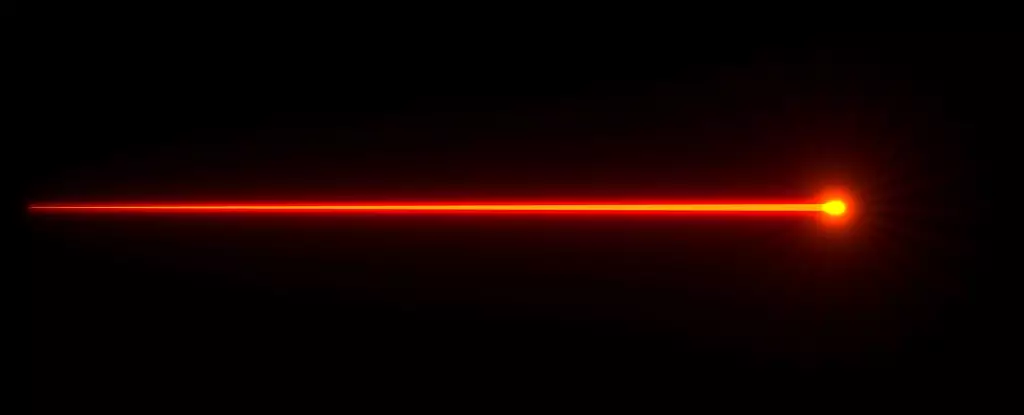The quest to send spacecraft to another star system has captivated humanity’s imagination for decades—an ambition often relegated to the realms of science fiction. Nevertheless, organizations like Breakthrough Starshot and the Tau Zero Foundation are actively exploring novel propulsion technologies that could potentially make interstellar travel a reality. A recent paper by Jeffrey Greason, chair of the Tau Zero board, and Gerrit Bruhaug of Los Alamos National Laboratory, delves into the physics behind these advanced propulsion systems, focusing specifically on one promising method: beamed energy propulsion utilizing relativistic electron beams.
The logistical and technological hurdles in designing a spacecraft capable of reaching distant star systems cannot be understated. One of the most significant challenges is the mass of the spacecraft itself. Breakthrough Starshot has proposed a lightweight probe equipped with expansive solar sails designed to be thrust into motion by powerful laser beams. However, the downside of such a minimalist approach is glaring: the resultant craft would lack the capability to return useful scientific data, meaning any mission would be more a demonstration of engineering prowess rather than a genuine scientific expedition.
In contrast, Greason and Bruhaug investigate a probe weighing up to 1,000 kg, comparable to the Voyager probes of the late 20th century. This increased mass may allow for a variety of scientific instruments and controls—not mere engineering marvels, but operational missions with tangible scientific objectives. However, increasing the mass of the spacecraft necessitates a reevaluation of the propulsion beam technology employed.
Breakthrough Starshot envisions a laser-based propulsion system operating in the visible spectrum. This design would effectively propel a probe for a limited distance—approximately 0.1 astronomical units (AU)—during its 277,000 AU journey to Alpha Centauri. Although this brief burst of acceleration may suffice for small probes, it brings to focus the question of beam duration and efficacy.
Greason and Bruhaug advocate for a more sustainable power option that could prolong the duration of thrust. By gradually ramping up the force, a heavier spacecraft could potentially achieve a significant fraction of the speed of light. However, achieving this calls for a detailed understanding of beam coherence over extreme distances—a critical aspect that the authors address in their work.
The technique proposed in the paper revolves around relativistic electron beams, which allow efficient propulsion. Accelerating electrons to speeds approaching that of light provides an inherent advantage since this process is more straightforward than accelerating other particles. A notable challenge arises from the repulsion among negatively charged electrons, which could hinder their collective performance. Thankfully, relativistic physics introduces a phenomenon known as “relativistic pinch,” which mitigates this issue by decreasing the repulsive forces experienced by the electrons at high velocities.
The paper posits that a well-engineered relativistic electron beam could sustain its power over vast distances—projectedly up to 1,000 AU. This marks a significant advancement over current propulsion technologies, as calculations indicate that a 1,000 kg probe could achieve speeds of up to 10% of light, allowing it to reach Alpha Centauri within 40 years.
While the theoretical underpinnings of this propulsion method appear promising, sizable obstacles still loom ahead. A massive concern is energy transmission and focusing the beam with sufficient strength to overcome the increasing distance. Estimates suggest that energy levels could reach up to 19 gigaelectron volts to effectively propel a probe situated at 100 AU, a formidable requirement but within the capabilities demonstrated by existing facilities like the Large Hadron Collider.
To harness this power, an innovative energy-capturing device called a “solar statite” has been proposed. This would ideally hover just above the Sun’s surface, held aloft by both solar radiation pressure and magnetic fields deriving from solar particles. Such a device would remain stationary concerning the probe, ensuring uninterrupted energy transfer.
Despite the fascinating theories and potential technological advancements presented, the entire endeavor remains profoundly speculative. The collaborative work of Greason and Bruhaug took place within the confines of a science fiction community—the ToughSF Discord server—highlighting the blurred lines between science and imagination.
Thus, while the prospect of employing beamed energy propulsion to send a scientifically equipped probe to Alpha Centauri could become a reality within a generation, it is essential to recognize that substantial scientific and engineering developments are required to bring this ambitious dream to fruition. Only time will determine if humanity can overcome these existing challenges to finally conquer the vast expanse of interstellar space.


Leave a Reply